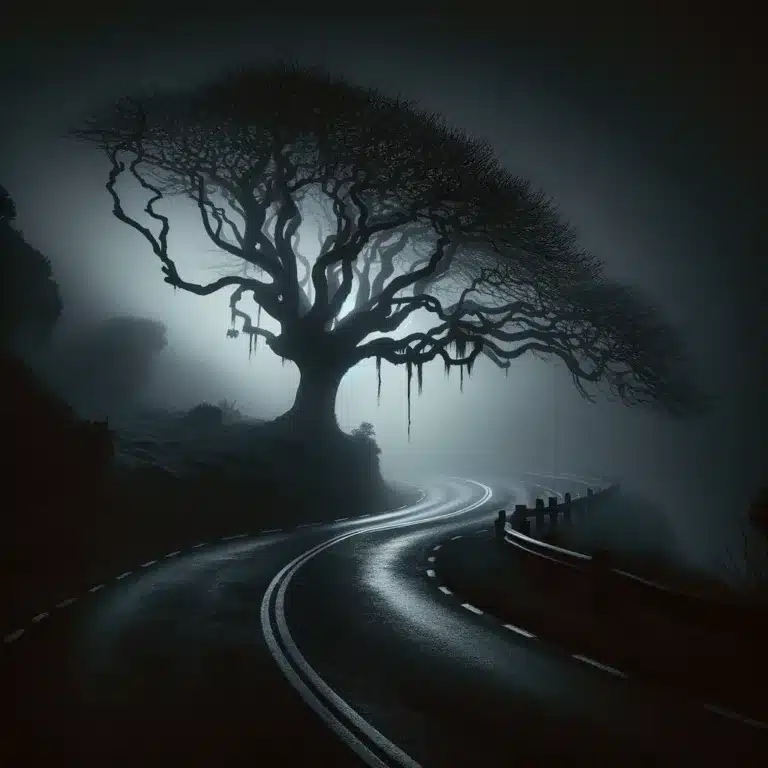On a fateful night in November, a birthday celebration on James Island ended in a heartbreaking tragedy. A joyous gathering turned somber when an SUV, carrying a group of friends, crashed into a large oak tree known locally as “The Widowmaker,” reports The Post and Courier. This tragic accident on Riverland Drive claimed the lives of four young men: Earl Hamilton Jr., James Hamilton, Tyler Barron, and Mitchell Watson. The community was left in shock, and this incident brought to the forefront serious questions about legal responsibility and safety.
The Widowmaker tree, marked with a sign and known for its danger, stood along a particularly tricky part of the road. This raises significant legal questions about who is responsible when a known hazard leads to a tragedy. In South Carolina, the law looks closely at such situations, examining who knew about the danger and whether they did enough to prevent harm.
Legal Precedents in South Carolina
The legal landscape of South Carolina provides a framework for understanding liability in such situations. Key cases have established principles that determine when a property owner or a public authority might be held responsible for accidents caused by hazards like dangerous trees.
- Ford v. South Carolina Dept. of Transp.: This case revolved around the liability of a property owner and the Department of Transportation for an accident caused by a tree that fell across a road. The ruling emphasized that if the defendants knew or should have known, through reasonable care, about the tree’s hazardous condition, they could be held liable. This case underscores the importance of actual or constructive notice in liability cases.
- Marsh v. S.C.D.H.P.T.: Here, the focus was on the liability of a public authority for damages caused by a fallen tree near a highway. The court held that the Department could be liable if it had notice, or should have, in the exercise of reasonable care, known about the tree’s hazardous condition.
- Staples v. Duell: This case considered the duty of care owed by a rural landowner in South Carolina. The court found that the landowner did not have a duty to inspect and improve his land for safety, as it was classified as rural. However, this duty could arise if the landowner had begun a practice of searching for dangerous trees along the roadway.
- Hill v. Broad River Power Co.: The case focused on the general duty of a property owner to keep their premises safe and warn of hidden dangers. It established that property owners are required to ensure their premises are in a reasonably safe condition and to warn about concealed perils.
- Tate v. City of Greenville: This case explored the liability of a municipality for an accident caused by an overhanging tree limb. The court concluded that the tree and branch were not defects in the street, and that the truck driver was negligent.
- Israel v. Carolina Bar-B-Que, Inc.: This ruling highlighted the duty of urban property owners to inspect trees on their property and ensure they are safe. The court established that this duty varies depending on whether the property is in an urban or rural area.
- Underwood v. Coponen: This case discussed the duty of care owed by a property owner with respect to trees on their property. The court held that the property owner was not liable as the tree in question was not deemed unsafe or defective.
- Shelton v. LS & K, Inc.: Here, the court examined the liability of a property owner for an accident caused by a tree that obstructed a driver’s view. The case hinged on the lack of expert testimony to establish a duty of care by the property owner.
- Breland v. S.C. Dep’t of Transp.: The court considered the liability of the South Carolina Department of Transportation for damages caused by a fallen tree near a public highway. The ruling suggested that liability depends on whether the Department was aware or should have been aware, through reasonable care, of the tree’s hazardous condition.
The James Island Incident in the Legal Context
The tragedy on James Island is a stark reminder of the real-world implications of these legal principles. The presence of a known hazard like the Widowmaker tree, coupled with the history of accidents, brings into question the extent of responsibility and duty of care expected from property owners and public authorities. The cases mentioned above provide pretty strong support for a claim against the landowner and perhaps the South Carolina Department of Transportation, as it seems clear that the tree was a known hazard given the sign and reflectors.
However, as we have discussed in the past, South Carolina is a comparative fault state. Accident investigators will be looking heavily at the driver’s role in the accident, as it occurred in the late hours after birthday celebrations at nearby bars – if the driver and occupants (all of whom were reportedly not wearing seatbelts) were found to be more at fault than the parties responsible for the tree, there might not be a legal claim at all.
And of course, the lawyers will want to sort through potential liability issues for the bar owners, given South Carolina’s dram shop laws – again, a recent topic we’ve covered here.
The Role of Legal Counsel
In light of such tragedies, it becomes imperative for those affected to understand their legal rights and the intricacies of liability law. Law firms like Proffitt & Cox in Columbia, South Carolina, are experienced in handling cases where negligence in managing known hazards leads to harm. They provide seasoned legal advice and representation, helping individuals navigate the complexities of the law and seek justice. They peel back the onion and analyze the multiple layers of liability in a case: the hazardous land’s owners, government agencies that allowed the road to veer so close to a “Widowmaker,” the injured and deceased parties’ own conduct, and the bar’s conduct in serving the reveling crew, to get to the heart of the matter and find answers for everyone.
Conclusion
The incident on James Island serves as a poignant reminder of the delicate balance between celebrating life’s moments and the ever-present dangers that lurk in our everyday environments.
It underscores the need for vigilance and responsibility from those in charge of public safety. For those impacted by similar tragedies, understanding your legal rights is crucial. Firms like Proffitt & Cox stand ready to assist in these challenging times, offering a guiding hand through the legal process and towards the pursuit of justice and change.
Aside from legal claims, the loss of these young men is a call to action, urging those responsible for public safety to take their duties seriously. There is a change.org petition asking for removal of the hazardous tree that was launched in the wake of the accident that has gathered over 1,000 signatures so far.
Reaching out to Proffitt & Cox isn’t just about seeking money for what happened. It’s about justice and making sure that what happened on Riverland Drive leads to changes that prevent future tragedies. If you or someone you know is facing a similar situation, talking to Proffitt & Cox could be a step towards healing and making a difference.





